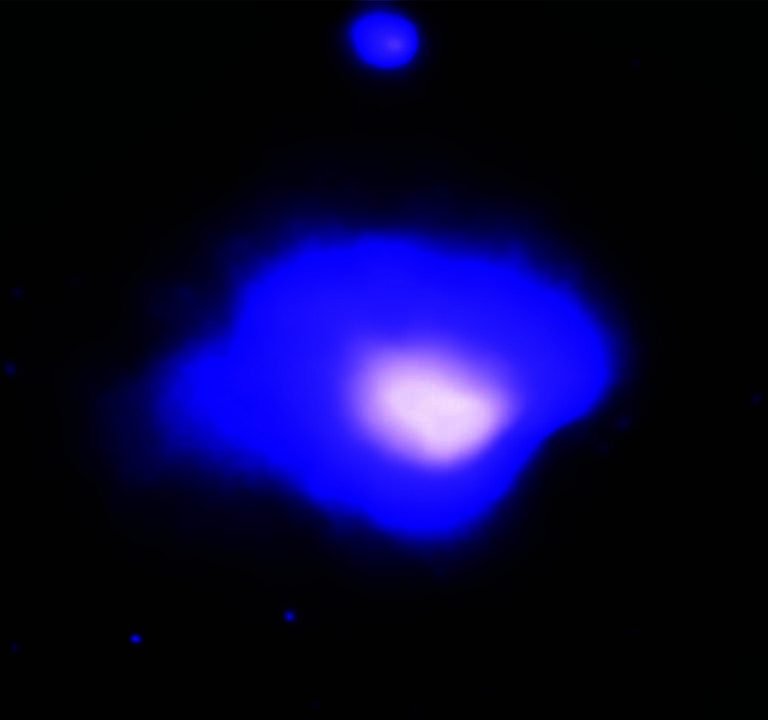The vast expanse of the cosmos has long captivated human thought, propelling us to explore its intricate workings. Among the most enigmatic and elusive components of the universe are dark energy and dark matter—two entities that, while they share a common prefix, diverge dramatically in their properties, behaviors, and implications for our understanding of the universe. To elucidate the distinctions between these two cosmic phenomena, one can envision dark matter as the scaffold of the universe, shaping its structure, while dark energy resembles an unseen wind, accelerating its expansion. This exploration delves into the fundamental differences between dark energy and dark matter, focusing on their definitions, characteristics, roles in cosmic evolution, and significance in contemporary astrophysical research.
Definitions and Fundamental Concepts
Dark matter is a form of matter that does not emit, absorb, or reflect light, thus rendering it invisible to traditional astronomical observation. Its existence is inferred from gravitational effects on visible matter, such as stars and galaxies. Dark matter is essential for explaining phenomena that cannot be accounted for by ordinary matter alone, such as the rotational speeds of galaxies and the gravitational lensing of light from distant objects.
In contrast, dark energy is a mysterious form of energy thought to permeate all of space, exerting a repulsive force that drives the accelerated expansion of the universe. Unlike dark matter, which is associated with mass and gravitation, dark energy is a homogeneous force influencing the cosmos on a grand scale. It is a cosmological constant that acts against the pull of gravity, propelling galaxies further apart over time.
Characteristics and Properties
Delving deeper into the characteristics of dark matter, one notes its palpable influence on celestial structures. Dark matter is hypothesized to constitute approximately 27% of the universe’s total mass-energy content. It interacts with ordinary matter through gravity, forming a cosmic web that holds galaxies together and governs the large-scale structure of the universe. Clusters of galaxies reside within halos of dark matter, its gravitational influence counteracting the tendency of galaxies to disperse. This gravitational binding effect allows galaxies to maintain their integrity amidst cosmic chaos.
Conversely, dark energy accounts for about 68% of the universe, highlighting its overwhelming supremacy in the cosmic energy budget. The nature of dark energy remains elusive, with prevailing theories suggesting it may manifest as a vacuum energy or a dynamic field that evolves over time. It appears to exert a uniform pressure across the cosmos, diminishing the role of gravity on cosmological scales. This property endows dark energy with the unique capability to accelerate universal expansion, a realization that overturns classical notions of an ever-collapsing universe dominated by gravitational attraction.
Role in Cosmic Evolution
As the universe evolved, dark matter played a crucial role in its genesis. Shortly after the Big Bang, conditions favored particle interactions that produced a profusion of dark matter. Over billions of years, it clumped together due to its gravitational pull, helping to seed the formation of galaxies. In this sense, dark matter is the architect of the cosmic landscape, shaping the vibrant tapestry of celestial structures that populate the universe.
Dark energy, however, ushered in a new epoch of cosmic development. Observations in the late 1990s revealed that the universe’s expansion had not merely persisted but was accelerating. The discovery fundamentally altered our perception of cosmic destiny. As dark matter formed the scaffolding upon which galaxies were built, dark energy emerged as the force that would dictate the ultimate fates of cosmic structures. It suggests a future where galaxies drift farther apart, potentially leading to an enigmatic scenario known as the “big freeze,” where the universe becomes a desolate expanse dominated by cold, sparse gas.
Significance in Contemporary Research
Dark matter and dark energy serve as focal points of contemporary astrophysical inquiry, driving a plethora of research initiatives aimed at elucidating their characteristics and origins. Dark matter searches leverage sophisticated particle detectors and astronomical surveys in hopes of directly observing its interactions. Ongoing experiments attempt to uncover the fundamental particles or candidates that comprise dark matter, with WIMPs (Weakly Interacting Massive Particles) and axions often cited as leading contenders.
Research into dark energy is equally fervent, as scientists seek to unravel its nature and implications for cosmology. The quest to understand dark energy encompasses the study of supernovae, cosmic microwave background radiation, and baryon acoustic oscillations, each providing vital clues about its properties. The challenge lies in deciphering whether dark energy is a constant force or a dynamic field that evolves, shaping the universe at every scale.
Conclusion
In summation, while dark energy and dark matter share a semblance in their nomenclature, they each occupy strikingly distinct roles within the cosmos. Dark matter serves as the skeletal framework of the universe, shaping its structure through gravitational interaction, while dark energy is the driving force behind the universe’s accelerated expansion, embodying the foreboding winds of cosmic evolution. Together, they constitute key components of the universe’s fabric, prompting further inquiry into the very nature of existence itself. As science advances and technology progresses, the mysteries surrounding dark energy and dark matter beckon us, enriching our quest for knowledge in the cosmic arena.












